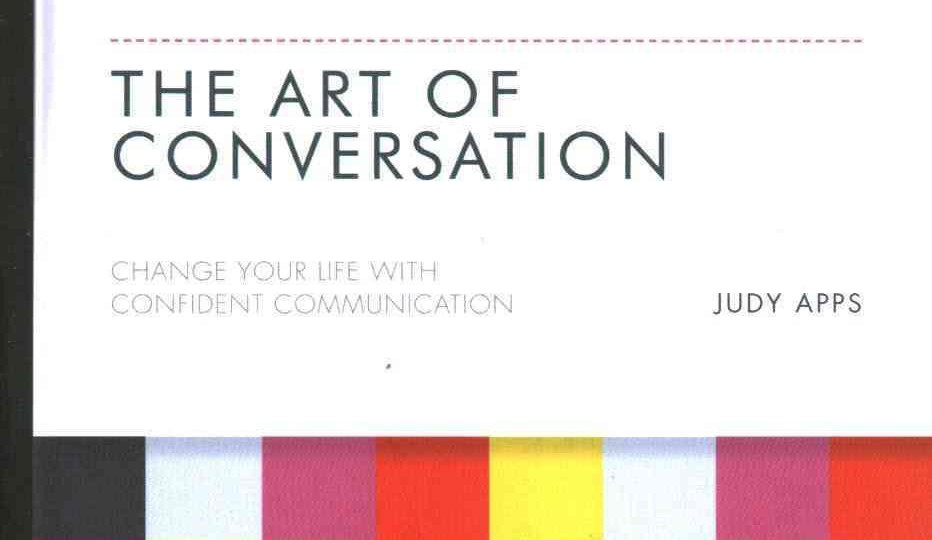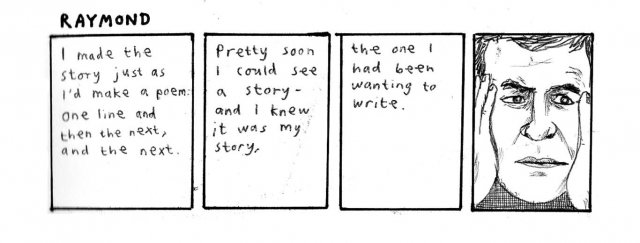In everyday life, we can’t escape interaction with people. We may not realize how crucial a conversation is: getting your coffee the way you like it, interviewing for the school you dream of, brainstorming for your new store with your colleague, closing that business deal with the amount you want, and even marrying that partner of yours. It all starts off with simple conversing.
The Art of Conversation by Judy Apps is a simple guide book, a fast read with probing questions and stimulating exercises to make you understand better on how conversational can be beneficial or destructive. Apps reinstates that having a connection with someone is the first basis of trust (and being trusted). Once the connection is established, your response to your talking partner is crucial, as it directs to where the conversation is going. You must find the balance and common ground within the dialogue; once you find the rhythm with the person, it will flow naturally. Apps mentions that having a conversation is like dancing; the rhythm is the first pattern you establish. Stumbling through them also happens, so don’t worry too much about it.

When is he gonna shut up?
Every conversation is different. The result, content, and approach depends on the purpose of the conversation. Why do you want to talk to the person in the first place? Once you’ve had that established, those aspects facilitate the conversation itself. Are you talking to the person to gain more information? Is it to negotiate or to motivate them? Is it to get to know the person? Or are you just waiting in line? Each purpose provides different methods and one method might not work with another. If you ask the same questions to different people, their answers will not be the same; how they answer will also be distinct.
What I particularly like about the book is how Apps mentions energy and connection in the first chapters. There’s some vibrations that rub off through each other; genuineness is clearly obscure, but you can read them through gestures, their tone, and your guts. Excluding interactions with salespeople, as they are trained to bullshit and have no real meaning when they converse other than selling whatever they sell, any kind of relationship develops through talking to the person. You’ll know if they’re really listening or not. This is crucial for both personal and professional relationship, as through those words, your personality shines. This is why you can’t fake it–it shows.

A little alcohol won’t hurt.
After a surprisingly bad trip, I started questioning my skills and personality. During my days on the other side of the world, I’ve always managed to talk to strangers. Why was I becoming so awkward? Why did I not know how to keep the flow going? One of the tricks Apps discussed is that to break the silence, after someone asks you a question, answer then ask them (something about the whatever topic) again. Try to ask the question proceeding the answer starting with why or how; avoid a yes/no question. If we are uncomfortable, it rubs off to the other person. Only once we are relaxed with ourselves, then the energies collide.

Great sex is commenced by witty texts.
The key to natural conversation is flexibility. With nonverbal communications, you can show that you’re listening. Sometimes mirroring the talker can indicate your agreement, thus providing more excitement to their stories. Long before we have TVs, phones, and other means of entertainment, people are “forced” to talk to each other. Performers, perhaps more commonly known as comedians, can talk solo for hours and we wouldn’t mind listening to them. That’s the art: combining speed, volume, pitch, and range with the intensity of the content.
Topics of talks are divided into five parts:
1. Thing (e.g.: soccer, film, the news)
2. Action (what you do)
3. Head (exchange ideas)
4. Heart (being honest, talking about your passion, what you love, intimate conversation, giving emotional support)
5. Soul talk (being seen for who you are; e.g.: how is writing a part of who you are? underlying meaning, what is not said, questions about life and the meaning of it)
By classifying the type of talk, you’ll be able to stir the conversation within the range of “properness” of your relationship with the person you’re talking to. Although a talk with a stranger can ignite something revealing that you might never know about yourself.

Talking to a bartender is always interesting.
You must be aware that some people use conversation as a game to manipulate. Through them, you do confrontation, resolve issues, round your assumptions, and learn something new. You’ve build a role-playing manner; giving different reaction and behavior. Social status also factors the conversation.
What you must remember is to be positive and renowned when giving feedback even in difficult situations. Also, good conversationalists always pronounce clearly what they want to say, and breathe on a pace. There’s always bad conversations–deal with it, but once in a blue mood, you’ll be able to have an unforgettable creative conversation. You must maintain a good one with that person.








